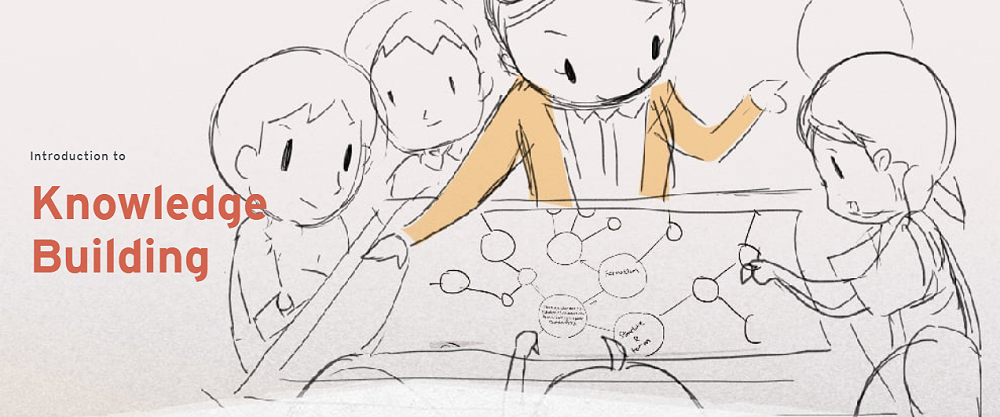
Literature Review: Knowledge Building Research
Professor Kwok-Wing Lai, examines some of the key findings on Knowledge Building from the literature.
Introduction
As a professional learning and development initiative supported by NetNZ, we (Kwok-Wing Lai, Marg Macpherson, Philippa Mallinson, Ken Pullar, and Darren Sudlow) formed a research and study group in December 2017 to review literature on Knowledge Building research (Scardamalia & Bereiter, 2006). After a database search was conducted, we found 56 field-based journal articles published up till 2017, and each article was reviewed by at least two participants. From December 2017 to May 2019 we held three video-conferences and six face-to-face meetings to discuss these articles. This paper summarises some of our findings.
Some contextual information
Knowledge Building research began in 1983 at the University of Toronto as a CSILE (Computer-Supported Intentional Learning Environment) project, led by Marlene Scardamalia and Carl Bereiter. The Knowledge Building pedagogical model is underpinned by 12 pedagogical principles and supported by a networking software called Knowledge Forum designed to facilitate knowledge building discourse.
In our review, three-quarters of the Knowledge Building studies were undertaken at the primary level, about 6% at the secondary level, and only two studies were conducted in early childhood settings.
There was a diversity of school subjects studied at the secondary level: physics (energy, static forces); environmental science; chemistry; visual arts (design); physical geography; liberal studies; algebra and geometry; and art history. At the primary level, most studies were related to science units (e.g., gravity and solar system; how things work; energy, light, electricity; optics; endangered species; human body; growing), but there were also studies on social studies; algebra; history; bio-geography; geography; and water cycle.
Over half of the studies were undertaken in Canada (31 in Toronto and 3 in Vancouver). Two other popular locations were Hong Kong (5 studies) and Singapore (5 studies). New Zealand and the US both had two studies. Single locations included Israel, Colombia, Finland, and Italy.
80% of the studies had a duration of at least four weeks.
We found that quite a few of the authors of these studies were Scardamalia and Bereiter’s students who published from their PhD theses. These studies were conducted at the University of Toronto lab school, which had a strong knowledge building culture, and the participating students and teachers often had prior experience of Knowledge Forum and understanding of the knowledge building principles, in particular, the importance of developing a community culture.
Some key findings
According to Chen and Hong (2016), the goal of Knowledge Building is to help students to become literate in a knowledge building society. In their recent review, they have highlighted four distinctive features of the Knowledge Building model.
One distinctive design feature of the KB model is to enhance epistemic agency, i.e., to support students to “take high-level social and cognitive responsibility”, and to take “control of their own ZPD [zone of proximal development]”. Our review confirms that in a well-designed and supported KB environment, students can develop epistemic literacy through generating their own questions and engaging in progressive problem solving.
Knowledge Building is about “taking responsibility collectively”. Thus, a KB environment is community-based, and ideas and knowledge are developed collectively for the whole community. Individual learning is considered a by-product and secondary. Our review finds ample evidence from the literature that a KB environment is indeed a collaborative environment. However, ideas in a KB community are often generated by small groups of students, and these ideas are often not further developed or built-on. Several articles (e.g., van Aalst & Chan, 2007) have provided detailed discussions of the collaborative knowledge building process and recent research has focused on how to support students to work on promising ideas (e.g., by Chen, 2017).
Creating new knowledge is a key objective of the model. There is ample evidence from the literature that students are able to engage in deep levels of inquiry, and generate deeper levels of explanation. There is evidence to show that students in a knowledge building environment can engage in a explanation-oriented discussion, generate deeper levels of questioning, and develop a deeper understanding of content (Hakkarainen, 2004; van Aalst & Chan, 2007; Yang, 2015; Zhang, 2007). However, there is sketchy reporting on what new knowledge has actually been created through this process (some evidence has been provided by Lee, Chan & van Aalst, 2006).
“KB is a creative act calling for design-mode thinking in its own right”. This calls for evidence from the literature to show how students engage in a process of design mode thinking during progressive problem-solving. We need information to show how design principles are effectively taught, and how students use them in KB discourses (some discussion has been provided by Lee, Chan, & van Aalst, 2006). Very few articles have provided detailed discussions of the implementation process.
Additional observations:
A sizeable group of researchers from several countries have engaged in Knowledge Building research over the last 30 years. In the field of computer-supported collaborative learning (CSCL), this group of researchers is highly productive and most influential on practice.
Recent Knowledge Building research focuses on finding ways to capture the collaborative knowledge building process and to show how collaborative knowledge building can be supported. There is keen interest to develop instruments and tools to assess Knowledge Building outcomes (e.g., research by Chan; Chen; Hong; van Aalst). However, there is little research to document what knowledge has actually been created and how it is being used in the community. Also, very few studies have focused specifically on epistemic agency or the design mode thinking process.
There is little conceptual discussion of why collaboration and collaborative discussions can support new knowledge creation.
Most articles have little appeal to teachers, since they are too technical. To have a real impact on teaching and learning in New Zealand, teachers need to know how to translate the Knowledge Building principles into practice in local contexts. Practice-oriented articles providing details on implementation and ideas of how this translation can be effectively done would be useful to teachers.
Conclusion
Our research group as a community has worked very well. In the process of reviewing and discussing, we have deepened our understanding of the Knowledge Building principles, raised many design and pedagogical questions, and created some ideas on how the principles could be used in the classroom. We have also developed some experience on how to use the Knowledge Building principles for professional learning and development.
